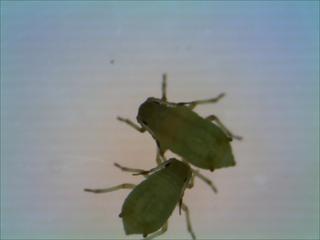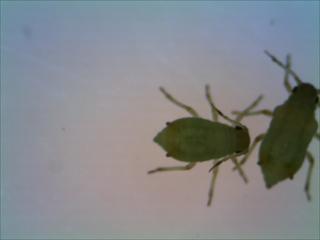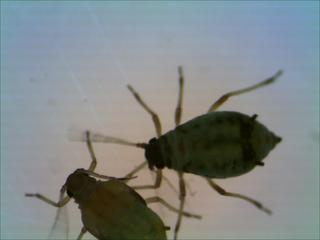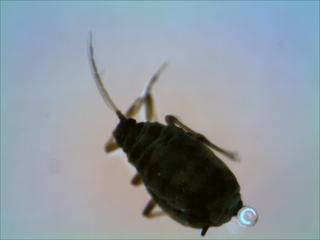|
|
Let’s take a closer look at our small, squishable friend Aphis echinaceae:

aren’t they precious little instars?!



Feel free to admire this beauteous winged alate

This madam is so mature that she looks like Jabba the Hutt. Note the honeydew she is secreting. That bubble of delicious sugary goodness is why ants farm aphids.
There is a cool ventral shot of Jabba that the flog won’t let me load up for some reason or another. Perhaps I shall try again at a later date. Until then, enjoy (it’s only taken me a month to get them up)!!!
Hillary
AphiddatasheetR.csv
I think I ought to enter a competition for who can post essentially the same data set on the flog the greatest number of times.
AphiddatasheetRready.csv
Stuart–
Here is my aphid data ready for R tomorrow!
Hillary
Aphiddatasheetcorrected.csv
This is the CVS file of my aphid data after making a couple of crucial corrections. Stuart, if you would insert this into the R script that shows the graphs of the population changes on each plant, that would be wonderful!
-Hillary
This R script, hillaryLookAtAphids.r, allows one to view graphs of growth of aphid clones in Lauren and Hillary’s experiment.
Here is our aphid data, synthesized into one large worksheet and ready to be analyzed!
Love,
Hillary (and Lauren’s spirit)
Aphiddatasheet.csv
aphidrawdata.csv
aphiddatastarted.csv
Here is our data so far. We are now working on transferring the raw data into the final form!
helandechfinaldataset3.csvAs all of you know katie and I are leaving this weekend to go back up to CBG, and I am hoping that Echinacea will be just about done flowering at all of my sites by then. It is looking hopeful and today I had my first site that was done flowering! I still need to tag the Echinacea at some of my sites though. I finished entering most of my data this weekend, and am very excited to see what the graphs and analysis will reveal. I am posting the cvs files for Stuart below, and some pics of a very interesting bug katie found today
 
corandcardfinaldataset2.csv
helandechfinaldataset2.csv
In case we need help 🙂
Materials:
Visor
Petri dish
paintbrush
mesh bags
twist ties
a partner!
1. Sync visor, get randomized plant (row and position) from Hillary.
2. Collect aphids from several plants in Common Garden. Find leaves with fat, dark aphids (aka mature). Gently disturb aphids with brush tip. When aphids start to scurry (remove stylets), brush them gently into the petri dish. Do not mash them by rubbing paintbrush against the plastic (attempting to dislodge them).
3. When approximately 20 mature aphids have been collected (not including tiny green ones), find assigned plant.
4. Check transfer plant for ants and aphids and record presence in form.
5. Find a suitable leaf (close to ground and small enough to fit in bag) that is free of any ants and aphids (if there are no empty leaves, squish present aphids).
6. Prepare bag over most of the leaf (opening bag and pulling over leaf). Then lift the bag up enough to stick the aphids in.
7. Transfer two random aphids to the top of the leaf (one big aphid and one slightly smaller). It works best if one partner holds the leaf and bag and the other transfers the aphids. Then the bag holder pulls the bag down and the transferrer twists the tie.
8. Pull bag completely over leaf and gently twist tie it closed. Avoid strangling the leaf or squishing or dislodging the aphids.
9. If aphids take a death plunge or fall off make sure they are not in the bag and transfer additional aphids as needed.
|
|







